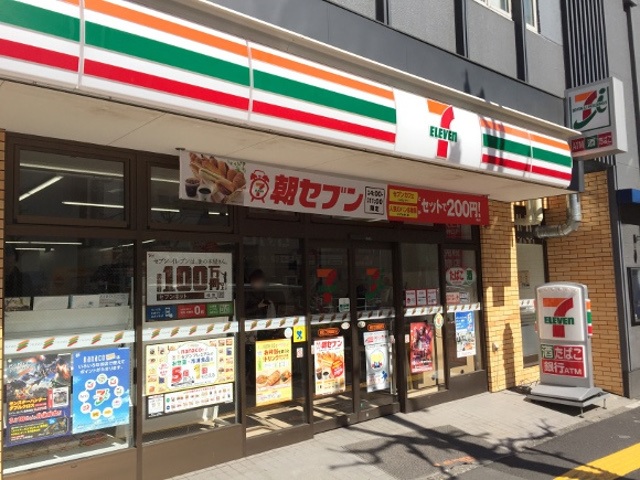
Attempted explanation gets called “lame excuse.”
Food in Japan is supposed to both taste good and look good, and that even goes for the offerings at humble convenience stores. Actually, considering that at a convenience store you’re seeing the finished foodstuff before you purchase it, you could argue that it’s even more important for their products to be visually appealing.
So recently 7-Eleven has found itself the target of complaints regarding its 334-yen (US$3.20) Atsuyakitamago Mix Sand, which translates to “Thick Omelet Mixed Sandwich.” The problem, though, isn’t that it looks bad on the shelf. As a matter of fact, pre-purchase it looks pretty much like it does on 7-Eleven’s website, shown here.
The controversy started when Japanese Twitter user @kou17 bought one and opened up not only the wrapping, but the sandwich itself. See how the cross-section makes it look like there’s a thick wedge of sweet and savory Japanese-style tamagoyaki omelet waiting for you? Well, when he took off the outer slice of bread…
セブンだけはこんな事しないと思ってたのに…… pic.twitter.com/Nm5E0MVvsQ
— kou(17) (@kou17) October 12, 2020
…he saw a depressingly thin sliver of egg running the length of the sandwich slice, followed by plenty unoccupied bread and a much smaller piece of egg than anyone would have suspected looking at the packaging.
In a country where consumers expect companies to be trustworthy, the photo sparked several angry reactions, and calls for explanations. 7-Eleven customer service representatives have since told reporters that a cutting error is to blame for the way what online commenters have dubbed the “Paper Tiger Sandwich,” looked.
In the preparation process, first a whole square sandwich is made, then cut diagonally into triangles before packaging. Before cutting, the representatives said, the egg must have placed off-center, resulting in the strip running the length of the cut being thinner than it should have been.
That explanation hasn’t entirely quelled online anger that the sandwich’s packaging and presentation is misleading, though. As shown in the diagram below from Japanese Twitter user @rafflesia9696, 7-Eleven is saying the sandwich should have looked like the one in the center, but an error made it look like the one on the right. However, any customer looking at the unopened sandwich would expect it to look like the one on the left, with the omelet covering the majority of the bread space.
https://twitter.com/rafflesia9696/status/1319044350488109056So 7-Eleven’s explanation is only riling people up more who see it as tantamount to saying “Sorry, we meant to trick you in a different way,” and Twitter reactions have included:
“Laughing at loud at the lame excuse 7-Eleven has for the Paper Tiger Sandwich.”
“Are they serious? Their excuse is like something a preschooler would try to pull.”
“Not buying that sandwich ever again.”
When asked why the sandwich is made with two separate egg pieces, the 7-Eleven representative simply said “All I can say is that that is how the product was planned.”
In 7-Eleven’s defense, the highly competitive nature of the Japanese convenience store industry often makes chains extremely reluctant to raise prices, and downsizing products isn’t an uncommon way to deal with cost pressures. Still, a little more transparency about what customers are getting for their purchases would definitely be appreciated, and probably a wise move if 7-Eleven wants to stay a step ahead of its eggy sandwich rivals.
Sources: Maidona News via Yahoo! Japan News via Hachima Kiko, Business Journal via Hachima Kiko, Twitter
Top image ©SoraNews24
Insert image: 7-Eleven
● Want to hear about SoraNews24’s latest articles as soon as they’re published? Follow us on Facebook and Twitter!

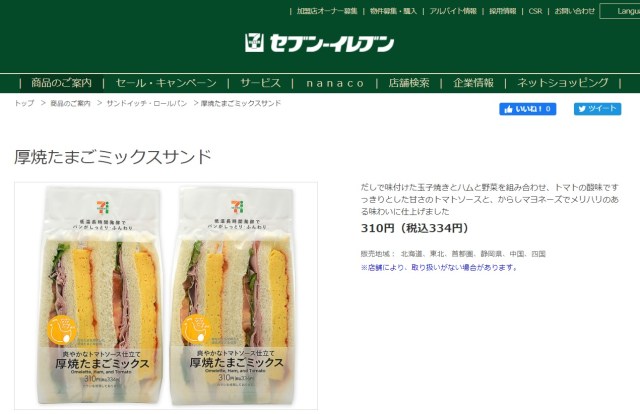
 25 different Japanese convenience store sandwiches – What’s inside them?【Photos】
25 different Japanese convenience store sandwiches – What’s inside them?【Photos】 7-Eleven’s new whipped cream sandwich takes Japanese convenience store food to a whole new level
7-Eleven’s new whipped cream sandwich takes Japanese convenience store food to a whole new level Deceptive strawberry milk package angers 7-Eleven customers following banana scandal
Deceptive strawberry milk package angers 7-Eleven customers following banana scandal Mr. Sato falls for the biggest egg sandwich he’s ever seen…but what does it look like inside?
Mr. Sato falls for the biggest egg sandwich he’s ever seen…but what does it look like inside? Half of 7-Elevens in Japan to start selling 100-yen Daiso products this month
Half of 7-Elevens in Japan to start selling 100-yen Daiso products this month Foreigner’s request for help in Tokyo makes us sad for the state of society
Foreigner’s request for help in Tokyo makes us sad for the state of society Japan’s summertime towelket pillowcases are even better with the addition of Ghibli stars【Photos】
Japan’s summertime towelket pillowcases are even better with the addition of Ghibli stars【Photos】 Ghibli Park now selling “Grilled Frogs” from food cart in Valley of Witches
Ghibli Park now selling “Grilled Frogs” from food cart in Valley of Witches Japanese city loses residents’ personal data, which was on paper being transported on a windy day
Japanese city loses residents’ personal data, which was on paper being transported on a windy day Suntory x Super Mario collaboration creates a clever way to transform into Mario【Videos】
Suntory x Super Mario collaboration creates a clever way to transform into Mario【Videos】 Seaside scenery, history, and so many desserts on Yokohama’s Akai Kutsu【Japan Loop Buses】
Seaside scenery, history, and so many desserts on Yokohama’s Akai Kutsu【Japan Loop Buses】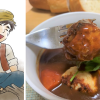 We recreate the delicious-looking meatball stew from Laputa: Castle in the Sky【SoraKitchen】
We recreate the delicious-looking meatball stew from Laputa: Castle in the Sky【SoraKitchen】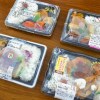 We taste makunouchi bento at four Japanese convenience store chains【Taste comparison】
We taste makunouchi bento at four Japanese convenience store chains【Taste comparison】 Japan’s massive matcha parfait weighs 6 kilos, contains hidden surprises for anyone who eats it
Japan’s massive matcha parfait weighs 6 kilos, contains hidden surprises for anyone who eats it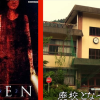 Camera crew visits the abandoned town that inspired Japanese survival horror game “Siren”【Video】
Camera crew visits the abandoned town that inspired Japanese survival horror game “Siren”【Video】 McDonald’s new Happy Meals offer up cute and practical Sanrio lifestyle goods
McDonald’s new Happy Meals offer up cute and practical Sanrio lifestyle goods Japanese ramen restaurants under pressure from new yen banknotes
Japanese ramen restaurants under pressure from new yen banknotes French Fries Bread in Tokyo’s Shibuya becomes a hit on social media
French Fries Bread in Tokyo’s Shibuya becomes a hit on social media Studio Ghibli releases new action figures featuring Nausicaä of the Valley of the Wind characters
Studio Ghibli releases new action figures featuring Nausicaä of the Valley of the Wind characters Red light district sushi restaurant in Tokyo shows us just how wrong we were about it
Red light district sushi restaurant in Tokyo shows us just how wrong we were about it New private rooms on Tokaido Shinkansen change the way we travel from Tokyo to Kyoto
New private rooms on Tokaido Shinkansen change the way we travel from Tokyo to Kyoto Tokyo Tsukiji fish market site to be redeveloped with 50,000-seat stadium, hotel, shopping center
Tokyo Tsukiji fish market site to be redeveloped with 50,000-seat stadium, hotel, shopping center Beautiful Ghibli sealing wax kits let you create accessories and elegant letter decorations【Pics】
Beautiful Ghibli sealing wax kits let you create accessories and elegant letter decorations【Pics】 Studio Ghibli releases Kiki’s Delivery Service chocolate cake pouches in Japan
Studio Ghibli releases Kiki’s Delivery Service chocolate cake pouches in Japan New definition of “Japanese whiskey” goes into effect to prevent fakes from fooling overseas buyers
New definition of “Japanese whiskey” goes into effect to prevent fakes from fooling overseas buyers Our Japanese reporter visits Costco in the U.S., finds super American and very Japanese things
Our Japanese reporter visits Costco in the U.S., finds super American and very Japanese things All-you-can-drink Starbucks and amazing views part of Tokyo’s new 170 meter-high sky lounge
All-you-can-drink Starbucks and amazing views part of Tokyo’s new 170 meter-high sky lounge More foreign tourists than ever before in history visited Japan last month
More foreign tourists than ever before in history visited Japan last month New Pokémon cakes let you eat your way through Pikachu and all the Eevee evolutions
New Pokémon cakes let you eat your way through Pikachu and all the Eevee evolutions Disney princesses get official manga makeovers for Manga Princess Cafe opening in Tokyo
Disney princesses get official manga makeovers for Manga Princess Cafe opening in Tokyo Sales of Japan’s most convenient train ticket/shopping payment cards suspended indefinitely
Sales of Japan’s most convenient train ticket/shopping payment cards suspended indefinitely Sold-out Studio Ghibli desktop humidifiers are back so Totoro can help you through the dry season
Sold-out Studio Ghibli desktop humidifiers are back so Totoro can help you through the dry season Japanese government to make first change to romanization spelling rules since the 1950s
Japanese government to make first change to romanization spelling rules since the 1950s Ghibli founders Toshio Suzuki and Hayao Miyazaki contribute to Japanese whisky Totoro label design
Ghibli founders Toshio Suzuki and Hayao Miyazaki contribute to Japanese whisky Totoro label design Doraemon found buried at sea as scene from 1993 anime becomes real life【Photos】
Doraemon found buried at sea as scene from 1993 anime becomes real life【Photos】 Tokyo’s most famous Starbucks is closed
Tokyo’s most famous Starbucks is closed One Piece characters’ nationalities revealed, but fans have mixed opinions
One Piece characters’ nationalities revealed, but fans have mixed opinions We asked a Uniqlo employee what four things we should buy and their suggestions didn’t disappoint
We asked a Uniqlo employee what four things we should buy and their suggestions didn’t disappoint Princesses, fruits, and blacksmiths: Study reveals the 30 most unusual family names in Japan
Princesses, fruits, and blacksmiths: Study reveals the 30 most unusual family names in Japan The Ultimate Battle for Ham Sandwich Supremacy – we rank Japan’s convenience store sandwiches
The Ultimate Battle for Ham Sandwich Supremacy – we rank Japan’s convenience store sandwiches 7-Eleven Japan now has plant-based vegetarian steamed “meat buns”
7-Eleven Japan now has plant-based vegetarian steamed “meat buns” Is this frozen tonkatsu sandwich vending machine really worth 700 yen?【Taste test】
Is this frozen tonkatsu sandwich vending machine really worth 700 yen?【Taste test】 This 7-Eleven convenience store causes a buzz with foreigners online
This 7-Eleven convenience store causes a buzz with foreigners online How to turn konbini food into a luxury Japanese meal
How to turn konbini food into a luxury Japanese meal Japanese convenience store sandwich becomes a hot topic on Reddit, but is it any good?
Japanese convenience store sandwich becomes a hot topic on Reddit, but is it any good? Japanese convenience store fools us with its 40-percent-more sandwich, but in a good way
Japanese convenience store fools us with its 40-percent-more sandwich, but in a good way 7-Eleven Japan creates official “how to open a rice ball” video to help overseas travelers【Video】
7-Eleven Japan creates official “how to open a rice ball” video to help overseas travelers【Video】 Burger King is releasing a Fake Burger in Japan
Burger King is releasing a Fake Burger in Japan 7-Eleven opens “next generation” SIP convenience store in Japan
7-Eleven opens “next generation” SIP convenience store in Japan 7-Eleven apologises for cockroaches in onigiri rice balls
7-Eleven apologises for cockroaches in onigiri rice balls 7-Eleven escalates anime goody arms race with gigantic Evangelion statue that could be yours
7-Eleven escalates anime goody arms race with gigantic Evangelion statue that could be yours Pokémon saving the planet with free Poké Ball-case eco bags from 7-Eleven Japan
Pokémon saving the planet with free Poké Ball-case eco bags from 7-Eleven Japan Green tea strawberry dessert sandwiches: Today’s reason Japanese convenience stores are awesome
Green tea strawberry dessert sandwiches: Today’s reason Japanese convenience stores are awesome This buttery, garlicky sausage and rice recipe is simple, cheap, and pretty much to die for
This buttery, garlicky sausage and rice recipe is simple, cheap, and pretty much to die for Hear ye, hear ye! 7-Eleven’s Cheese Buns are the best cheesy bread snacks on the market
Hear ye, hear ye! 7-Eleven’s Cheese Buns are the best cheesy bread snacks on the market
Leave a Reply